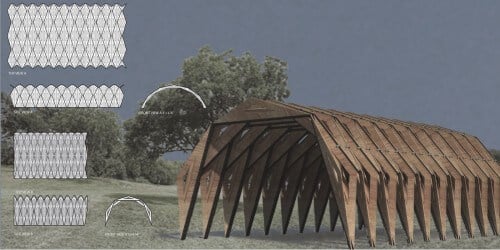Today, everyone is talking about a "smart home" - in which everything is electronic and electrical. Nature offers a slightly different smart home

By: Ziv Kohani
It has long been known that one of the amazing things in nature is the ability to adapt and change what is needed to survive in the environmental conditions.
New research carried out at the School of Architecture of the Pontifical Catholic University of Puerto Rico, on "weather-adaptive" buildings is based on the ability of species in nature, such as bees and cockroaches, to understand the "clues" of the environment. The research tries to define a lightweight structure, which is able to predict the weather conditions and can change its shape: volume, shape, etc., to create adapted living conditions.
The purpose of the research is to characterize a model of a structure that can stretch and contract to adjust its volume to the temperature and humidity it feels in its environment. Temperature and humidity are known as the two most representative factors for weather forecasting. In tropical areas for example, before rain falls the temperature drops and the humidity rises.
After an in-depth study that revealed the mechanisms that make up the sensors, further research was done to find the materials that can "feel" the environment and change their shape accordingly. Experiments done with different metals have shown successful results in achieving a change in size as a result of a change in temperature.
It is well known that materials expand when hot and contract when cold. One of the revolutionary ideas was actually creating a structure that, when it "feels" that it is about to rain, will increase its volume, thus providing a wider protection ("a bigger umbrella") against the rain. This idea, therefore, contradicts what we know, because the hotter it is, the less chance there is of rain.
For this purpose, experiments were made with various metals, including those that are usually used in advanced medical devices. Additional experiments were done around the ability of different types of wood to shrink and expand depending on the moisture they absorb. Combining the properties of metals and wood and updating them, according to the researchers, are the key to creating the same smart structure. The idea surrounding such a building can of course be used in many environmental buildings, especially in areas where there are frequent and extreme changes in the weather.
